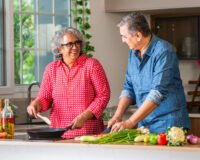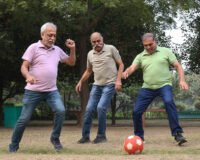Staying active is one of the most powerful tools seniors can use to maintain health, mobility, and a positive outlook on life. As we age, our bodies undergo natural changes that make flexibility, strength, and endurance more difficult to maintain. However, regular physical activity can significantly slow this process, reducing the risk of chronic disease and enhancing quality of life. Whether you are a senior citizen staying home or living in independent senior retirement homes, easy fitness routines can be adapted to suit your lifestyle and fitness level.
Why Fitness is Important for Seniors
Before we get into the actual routines, let’s talk about the advantages of exercise for seniors. Regular movement:
- Enhances balance and coordination, lowering the risk of falls
- Improves cardiovascular health
- Increases strength in muscles and bone density
- Improves mood and mental sharpness
- Encourages social interaction when done in group settings
- Helps maintain independence in daily activities
Chair Exercises
Suitable for those with mobility limitations or those who want a safer, seated program, chair exercises enhance circulation, flexibility, and upper body strength.
Routine:
Seated Marching: Sit up straight and march your knees alternately.
Arm Circles: Hold your arms out to the sides and make small to medium-sized circles.
Seated Leg Lifts: Lift one leg straight out, hold for a few seconds, and then lower. Do the same with the other leg.
Neck Stretches: Slowly tilt your head from side to side and front to back to keep your neck flexible.
Length of time: 15–20 minutes, each day.
Walking
Walking is one of the simplest and most effective exercises for seniors. Whether it’s a stroll through the neighborhood or laps around the garden, walking improves heart health and promotes joint mobility.
Tips:
Wear comfortable shoes that are easy to walk in
Use a walking stick if necessary for stability
Stay hydrated, particularly in warmer seasons
Walk with a partner for support and encouragement
Target: 20–30 minutes, 3 to 5 days per week.
Stretching & Flexibility
Stretching keeps joints limber and muscles relaxed, reducing stiffness and discomfort common in older age.
Routine:
Toe Touches: From a standing or sitting position, gradually stretch towards your toes.
Side Bends: Slowly bend your body to both sides to stretch the waist area.
Shoulder Rolls: Forward and backward roll through shoulders in slow, circular motions.
Wrist & Ankle Rolls: Roll wrists and ankles to avoid stiffness.
Time: 10 minutes, daily or post-walks.
Strength Training with Light Weights
Strength training doesn’t mean lifting heavy weights. Resistance exercises using light dumbbells, resistance bands, or even water bottles help maintain muscle mass and bone strength.
Routine:
Bicep Curls: Holding a weight, curl your arms upward and lower slowly.
Overhead Press: Push weights above your head and slowly bring them down.
Leg Extensions: While seated, extend your legs one at a time with ankle weights if possible.
Reps: 8–10 repetitions for each exercise, 2–3 times a week.
Balance and Stability Exercises
Balance exercises prevent falls—a significant issue in seniors. Balance exercises enhance body awareness and coordination.
Routine:
Single-Leg Stands: Stand with your back to a chair or wall and raise one foot off the floor for 10 seconds.
Heel-to-Toe Walk: Walk in a straight line putting the heel of one foot directly in front of the toes of the other.
Tai Chi: Smooth flowing movements enhance balance and relaxation (can be learned through guided videos).
Duration: 10–15 minutes, 2–3 times a week.
Breathing & Relaxation
Too often neglected, breathing exercises reduce anxiety, increase lung capacity, and enhance sleep.
Routine:
Deep Breathing: Breathe slowly through the nose for 4 seconds, hold for 2 seconds, and breathe out slowly through the mouth for 6 seconds.
Shoulder Relaxation: Pair deep breathing with shoulder rises and falls to dissolve tension.
Time: 5–10 minutes, particularly before bedtime or after physical activity.
Adapting Fitness to Your Lifestyle
For the home-bound senior citizen, these exercises can be easily integrated into your routine. Select a few that you like and add them to your morning or night routine. Always begin gradually and heed your body’s signals.
For residents of active senior citizen homes, such activities are usually provided as part of health programs. Group activity not only encourages exercise but also social interaction and mental well-being.
Conclusion
At Saral Satya Legacy (SSL), we believe that staying active is a key ingredient to aging gracefully. As one of the most dependable senior retirement homes, SSL offers an energetic setting in which fitness becomes an integral part of everyday active living.
For the senior citizen staying home, transitioning to a thoughtfully designed community like SSL means gaining access to expert-led fitness routines, safety, and companionship—all essential elements for a fulfilling, active retirement. SSL isn’t just a place to live—it’s a place to thrive. If you’re looking to embrace health, happiness, and a vibrant lifestyle in your golden years, Saral Satya Legacy (SSL) is your destination!





